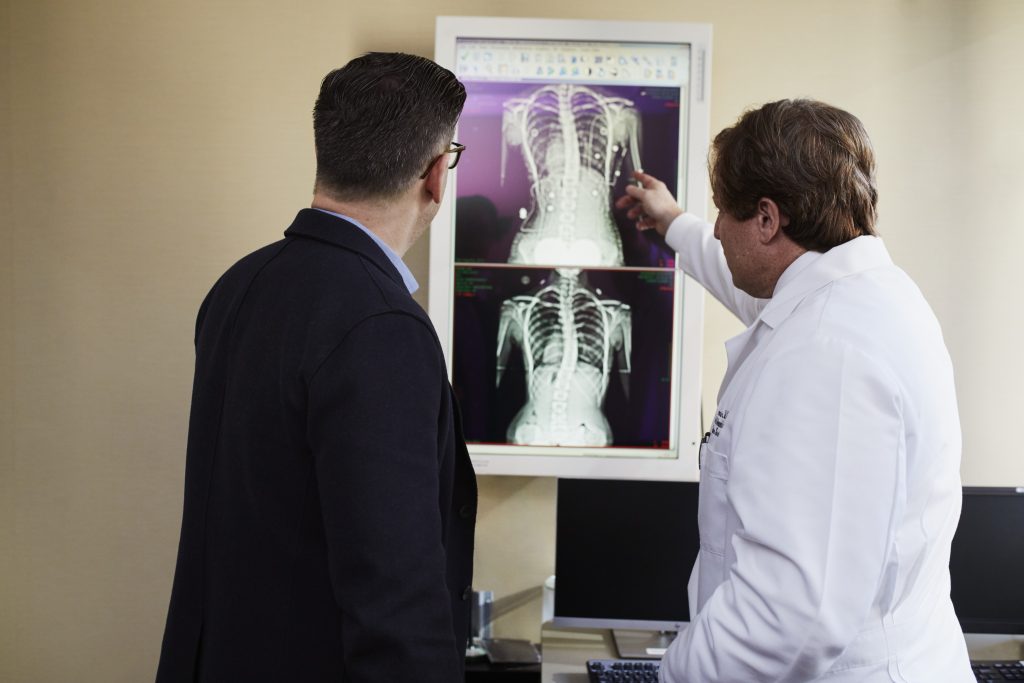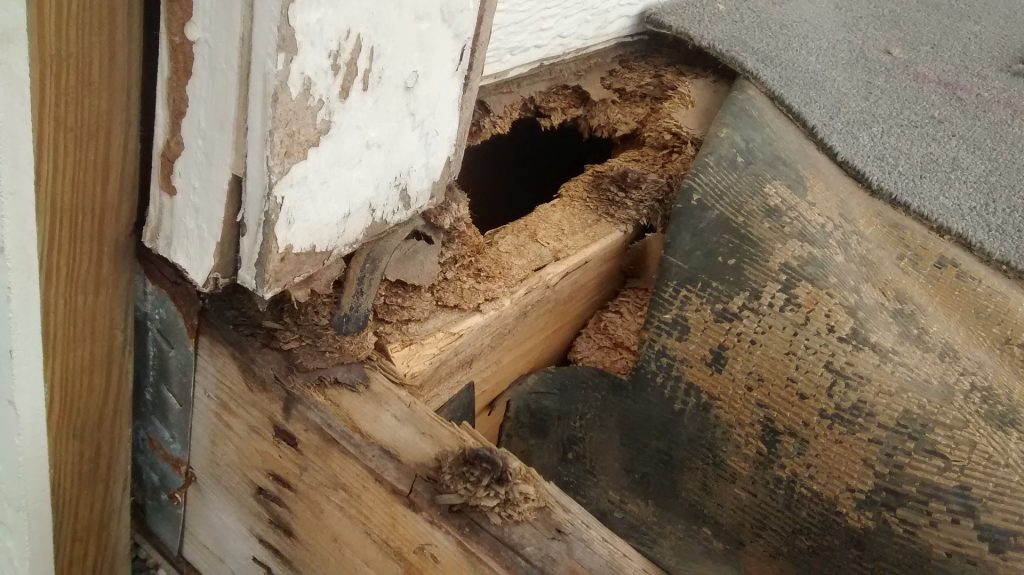 The “burden of proof” may be a familiar concept to everyone, even those inexperienced with the courts. The idea is that the party in a lawsuit holding the “burden of proof” is tasked with providing evidence that reaches the level of proof required to meet the burden. In car accidents, where amount of fault decides how damages may be determined, this burden is especially important. The evidence in some car accidents makes the division extremely obvious, both as to fault and to extent of damage. Other cases, however, especially when the accident is relatively minor, may not be so clear cut. In an unpublished opinion, the Louisiana Third Circuit Court of Appeal considered such a case where the burden of proof was the main issue.
The “burden of proof” may be a familiar concept to everyone, even those inexperienced with the courts. The idea is that the party in a lawsuit holding the “burden of proof” is tasked with providing evidence that reaches the level of proof required to meet the burden. In car accidents, where amount of fault decides how damages may be determined, this burden is especially important. The evidence in some car accidents makes the division extremely obvious, both as to fault and to extent of damage. Other cases, however, especially when the accident is relatively minor, may not be so clear cut. In an unpublished opinion, the Louisiana Third Circuit Court of Appeal considered such a case where the burden of proof was the main issue.
In 2014, Meagan Lemoine was driving a truck owned by the father of her children near Marksville, LA. With her were her young children and her sister. She had stopped at a traffic light when she was rear-ended by a white Jeep. No one in the car was able to identify the driver of the Jeep. After stopping to assess the damage to her vehicle, Ms. Lemoine followed the Jeep to a nearby AutoZone where the driver, a woman, exited the vehicle and entered the store. Ms. Lemoine took pictures of the Jeep. Later that afternoon, she reported the accident to the local police. A few months later, the owner of the Jeep, Lionel Augustine, and his wife received a letter from tMs. Lemoine’s attorney regarding the accident. Both Mr. and Mrs. Augustine denied they had been involved in an accident on that date. Mrs. Augustine claimed she had driven that day and visited AutoZone, but denied being in an accident. They both pointed out that there had been no damage visible on the Jeep. The insurance agent for the Augustines spoke about damage in the form of a “black smudge” on the front of the vehicle, but it did not match the position of the trailer hitch on the truck Ms. Lemoine was driving. The trial court eventually ruled in favor of Ms. Lemoine and her sister. Both parties appealed.
In Louisiana, the burden of proof is upon the person seeking damages in a lawsuit. Big D Dirt Servs., Inc. v. Westwood, Inc, 653 So.2d 604, 609 (La. Ct. App. 1995) This means the party must show enough evidence to convince the finder of fact in a case, whether it be jury or the judge, that the allegations of damage are factual. While both sides seemed to be telling what they believed to be the truth, their stories were completely contradictory. The Third Circuit considered the facts and how the trial court had handled them. The fact that there was white paint on the truck’s trailer hitch after the accident seemed to indicate that an accident had occurred. Also, the court considered that the heavy traffic in the area at the time made it very likely that such an accident could easily occur, and that a driver might not actually be aware they have hit another vehicle. The Third Circuit considered that the plaintiffs had observed the accident and were able to track the same Jeep. There was also uncontroverted evidence that Mrs. Augustine was in the area that day. With this evidence, Ms. Lemoine and her sister met the burden of proof that both the accident occurred and Mrs. Augustine was the responsible party. Although Mrs. Augustine disputed the evidence, the Third Circuit held that the trial court’s ruling was reasonable. The Third Circuit does not have to determine that the trial court was right or wrong, just whether or not the decision was a reasonable one given the evidence. Rosell v. Esco, 549 So. 2d 840 (La. 1989).
 Can a court reinstate a former city employee’s job after being wrongly terminated? Well, fortunately for Mr. Turner, the answer is yes.
Can a court reinstate a former city employee’s job after being wrongly terminated? Well, fortunately for Mr. Turner, the answer is yes.  Louisiana Personal Injury Lawyer Blog
Louisiana Personal Injury Lawyer Blog


 Injuries arise in many unexpected ways and locations, even from a trip to the local grocery store. Sometimes this occurs due to a patron’s own clumsiness. Regardless, a grocery store may still be responsible for injuries if the store was negligent, or did not take reasonable actions to fix a known danger. For one Gretna woman, however, the Louisiana Fifth Circuit Court of Appeal affirmed a ruling by the 24th Judicial District Court Parish of Jefferson holding that the grocery store had no responsibility for her injuries.
Injuries arise in many unexpected ways and locations, even from a trip to the local grocery store. Sometimes this occurs due to a patron’s own clumsiness. Regardless, a grocery store may still be responsible for injuries if the store was negligent, or did not take reasonable actions to fix a known danger. For one Gretna woman, however, the Louisiana Fifth Circuit Court of Appeal affirmed a ruling by the 24th Judicial District Court Parish of Jefferson holding that the grocery store had no responsibility for her injuries. When an employee is injured on the job, workers’ compensation insurance often delivers more expediently than going through the courts. Unfortunately for the employee, it is also often less money than an injured employee could be awarded by suing the employer. As a Baton Rouge man recently learned, your type of employer can determine whether or not you’re able to sue your employer for work-related injuries.
When an employee is injured on the job, workers’ compensation insurance often delivers more expediently than going through the courts. Unfortunately for the employee, it is also often less money than an injured employee could be awarded by suing the employer. As a Baton Rouge man recently learned, your type of employer can determine whether or not you’re able to sue your employer for work-related injuries.  In order to successfully handle a lawsuit addressing the duty a business has to its patrons, an injured party should know that under Louisiana’s duty-risk analysis the main questions are: (1) whether a duty was owed; (2) whether that duty was breached; and (3) whether the breach caused the patron’s harm. Additionally, for a lawsuit in which the premises of the building are alleged to be dangerous, the plaintiff must prove that the building defect in question was “unreasonably dangerous.”
In order to successfully handle a lawsuit addressing the duty a business has to its patrons, an injured party should know that under Louisiana’s duty-risk analysis the main questions are: (1) whether a duty was owed; (2) whether that duty was breached; and (3) whether the breach caused the patron’s harm. Additionally, for a lawsuit in which the premises of the building are alleged to be dangerous, the plaintiff must prove that the building defect in question was “unreasonably dangerous.” The “burden of proof” may be a familiar concept to everyone, even those inexperienced with the courts. The idea is that the party in a lawsuit holding the “burden of proof” is tasked with providing evidence that reaches the level of proof required to meet the burden. In car accidents, where amount of fault decides how damages may be determined, this burden is especially important. The evidence in some car accidents makes the division extremely obvious, both as to fault and to extent of damage. Other cases, however, especially when the accident is relatively minor, may not be so clear cut. In an unpublished opinion, the Louisiana Third Circuit Court of Appeal considered such a case where the burden of proof was the main issue.
The “burden of proof” may be a familiar concept to everyone, even those inexperienced with the courts. The idea is that the party in a lawsuit holding the “burden of proof” is tasked with providing evidence that reaches the level of proof required to meet the burden. In car accidents, where amount of fault decides how damages may be determined, this burden is especially important. The evidence in some car accidents makes the division extremely obvious, both as to fault and to extent of damage. Other cases, however, especially when the accident is relatively minor, may not be so clear cut. In an unpublished opinion, the Louisiana Third Circuit Court of Appeal considered such a case where the burden of proof was the main issue.  Buying a house and later discovering that the house has foundational defects is a nightmare every homeowner seeks to avoid. Even more unpleasant is to find out that you do not have any recourse against the seller. The nature of such recourse would partially depend on when the defects were discovered, but also whether the seller is a builder, contractor, or manufacturer, because such a status might extend the timeframe of bringing in an action against the seller.
Buying a house and later discovering that the house has foundational defects is a nightmare every homeowner seeks to avoid. Even more unpleasant is to find out that you do not have any recourse against the seller. The nature of such recourse would partially depend on when the defects were discovered, but also whether the seller is a builder, contractor, or manufacturer, because such a status might extend the timeframe of bringing in an action against the seller. In Louisiana, if someone does work to your home and you find the work to have been completed unsatisfactorily, you have a one-year prescription period to bring the issue to court. However, what does one do if problems from this work do not appear right away? Considering the statute that allows a one-year prescription period at the first notice of damage, what exactly is noticing damage? Is it formally reporting the issue or simply remarking on an observation? The Louisiana Fifth Circuit Court of Appeals recently decided a case on appeal from Jefferson Parish that answered such questions.
In Louisiana, if someone does work to your home and you find the work to have been completed unsatisfactorily, you have a one-year prescription period to bring the issue to court. However, what does one do if problems from this work do not appear right away? Considering the statute that allows a one-year prescription period at the first notice of damage, what exactly is noticing damage? Is it formally reporting the issue or simply remarking on an observation? The Louisiana Fifth Circuit Court of Appeals recently decided a case on appeal from Jefferson Parish that answered such questions. Arbitration is a matter of contract. Parties to an arbitration agreement contract on matters they agree to submit to arbitration. That agreement defines the extent to which the parties are subject to the authority of arbitrator, and such authority corresponds to the boundaries set in the agreement. This case is an example of an attempt to enlarge those boundaries and of the consequences of such attempt.
Arbitration is a matter of contract. Parties to an arbitration agreement contract on matters they agree to submit to arbitration. That agreement defines the extent to which the parties are subject to the authority of arbitrator, and such authority corresponds to the boundaries set in the agreement. This case is an example of an attempt to enlarge those boundaries and of the consequences of such attempt. When driving at night, it is always important to make sure your vehicle lights are working, not just so you can see, but also so others can see you. Not only can this simple task avoid an accident, but failure to do so can get you in trouble with the law.
When driving at night, it is always important to make sure your vehicle lights are working, not just so you can see, but also so others can see you. Not only can this simple task avoid an accident, but failure to do so can get you in trouble with the law.